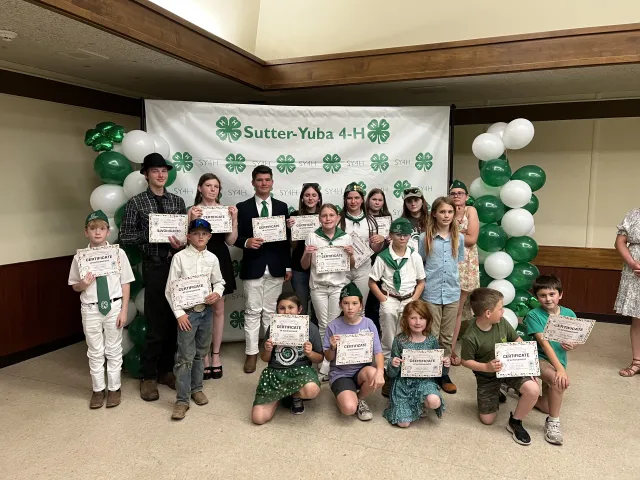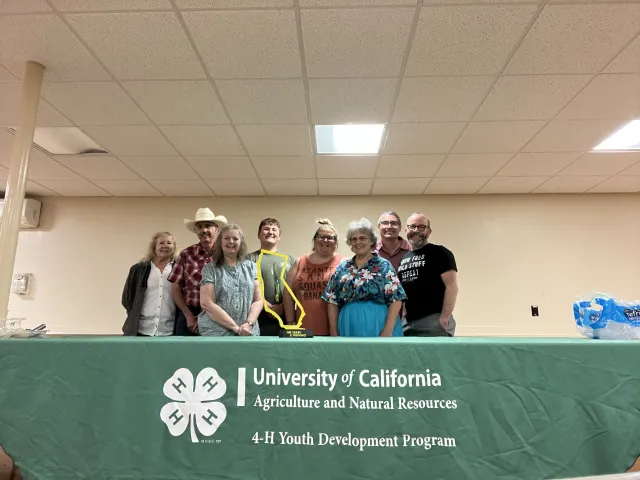Introduction

As we prepare for a new 4-H program year, we have many reasons to be grateful. Recently I attended a 4-H drone camp in Santa Clara and witnessed middle- and high-school youth present their capstone STEM projects in front of their parents and 4-H staff. I was amazed at what they had learned in just one week of drone camp. For those of us who work in youth development, we are grateful for our young people and their many successes. Youth are the "spark" that keeps us working hard to give them opportunities to grow and learn. While we are grateful for our young people, there are many ways we can view the practice of gratitude.
What is Gratitude?
We know that gratitude can promote wellbeing and life satisfaction (Dickens, 2017). Gratitude can also help us cope with life situations (Wood et al., 2007) and reduce stress and depression (Wood et al., 2008). Gratitude can also promote healthy relationships (Portocarrero et al., 2020), which are important persons who shape positive developmental contexts for youth to thrive (Arnold and Gagnon, 2020).
One study outlines four perspectives of gratitude, which include: a) emotional, b) evaluative, c) social, and d) intentional (Youssef-Morgan et al., 2022). To begin, gratitude can be conceptualized as an emotional state that differs within each person. Next, gratitude can involve positive appraisals or evaluations of life situations. In addition, gratitude can be other-focused, such as being thankful for another person. Furthermore, gratitude can be a proactive attitude (i.e. as oppose to being reactive to another person's benevolence). In this last perspective, a person chooses to be intentionally grateful and discovers ways to practice gratitude.
Expressing Gratitude in 4-H
So what can gratitude look like in our 4-H youth development program? To use the framework provided above, practicing gratitude in 4-H can involve an emotional, evaluative, social, and intentional perspective. Let's unpack this a little more.
Emotional Gratitude

In life, we feel different emotions as human beings. Sometimes we may feel happy and other times we may feel sad. Emotions are a normal part of our daily lives, and they are certainly part of our 4-H program. For example, this past year I attended a 4-H achievement awards event in Sutter-Yuba and witnessed many youth people receive awards for their accomplishments. About 75 people attended the event and we shared a meal together and had great conversations. This experience provided me and so many others with a feeling of joy and happiness. This was a feel-good event that I, and so many others, were grateful for. This example illustrates how gratitude can be a felt experience. We feel a sense of gratefulness for our young people and also the many adult volunteers who make the 4-H program a success each year.
Evaluative Gratitude
In addition to emotions, gratitude can be evaluative. In the 4-H program, we have youth presentation events where young people share about a particular subject, such as braiding hair, sewing, or how to change a car tire. Usually, there are 4-H evaluators that listen to the young people and provide constructive feedback on what they enjoyed and maybe a few opportunities for growth. During these events, we appraise what the young people have learned and respond in gratitude for how much they have grown in learning about their particular subject. This 4-H example illustrates an evaluative perspective of gratitude.
Social Gratitude

A third perspective of gratitude can involve our ability to focus on others. For example, over the summer, many 4-H programs hold summer camps that are youth-driven and chaperoned by 4-H adult volunteers. In Nevada County, we have a wonderful couple who has directed our summer camps for many years. So many of us are grateful for their leadership, service, and love for our youth and adult volunteers. We focus our gratefulness toward this couple. This example illustrates the social perspective of gratitude.
Intentional Gratitude
Finally, gratitude can be perceived as being intentional or proactive. Contrary to responsive gratitude, where we respond to the benevolence of someone else, intentional gratitude looks for ways to practice gratitude. In 4-H, I am reminded by a retired 4-H staff person who ran our embryology STEM program for many years in Placer County and the surrounding regions. I had the opportunity to meet her and listen to her 4-H stories. She exuded a spirit of gratitude. She looked for ways to be grateful and found that by using a 4-H chicken science program, she could provide joy for so many young people who may be going through difficult times. She found ways to practice gratefulness and be a blessing in the lives of so many youth. What a remarkable picture of intentional gratitude!
Practical Applications for 4-H
As we embark on a brand new 4-H program year, gratitude will play an important part in how we view others and ourselves. Here are some reflection questions to consider.
- What positive emotions do you hope to feel as you experience the 4-H program this year? How can you express gratefulness for these positive emotions?
- What are some ways you can observe our young people's accomplishments? How can you express gratefulness to them for who they are and for what they have learned?
- Who in your 4-H club are you grateful for? How can you let them know how much they mean to you?
- In what ways can you be intentional in showing others your gratitude? How can you bless others through your words and actions?
- What are you grateful about yourself? How can you show yourself kindness this week?
References
Arnold, M. E., & Gagnon, R. J. (2020). Positive youth development theory in practice: An update on the 4-H Thriving Model. Journal of youth development (Online), 15(6), 1-23. https://doi.org/https://doi.org/10.5195/jyd.2020.954
Dickens, L. R. (2017). Using gratitude to promote positive change: a series of metaanalyses investigating the effectiveness of gratitude interventions. Basic Appl. Soc. Psychol. 39, 193–208. https://doi.org/10.1080/01973533.2017.1323638
Spence, J. R., Brown, D. J., Keeping, L. M., and Lian, H. (2014). Helpful today, but not tomorrow? Feeling grateful as a predictor of daily organizational citizenship behaviors. Pers. Psychol. 67, 705–738. https://doi.org/10.1111/peps.12051
Wood, A. M., Joseph, S., and Linley, P. A. (2007). Coping style as a psychological resource of grateful people. J. Soc. Clin. Psychol. 26, 1076–1093. https://doi.org/10.1016/j.cjtee.2020.11.007
Wood, A. M., Maltby, J., Gillett, R., Linley, P., and Joseph, S. (2008a). The role of gratitude in the development of social support, stress, and depression: two longitudinal studies. J. Res. Pers. 42, 854–871. https://doi.org/10.1016/j.jrp.2007.11.003
Youssef-Morgan, C. M., van Zyl, L. E., & Ahrens, B. L. (2022). The work gratitude scale: development and evaluation of a multidimensional measure. frontiers in psychology, 12, 795328. https://doi.org/10.3389/fpsyg.2021.795328
